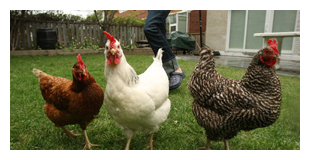Featured Indicators
 Backyard livestock
Checklist for an enviable backyard: A sparking turquoise kidney-shaped pool with a waterfall f...
Backyard livestock
Checklist for an enviable backyard: A sparking turquoise kidney-shaped pool with a waterfall f...
 Beards
When Darwin’s theory of evolution by natural selection was first popularized among the Victorian i...
Beards
When Darwin’s theory of evolution by natural selection was first popularized among the Victorian i...
Cultural Indicator
Artisanal food

Let’s just get this out of the way right now: the word ‘artisanal’ (and its oft-bastardized cousin, ‘artisan’) is one of the most inappropriately overused in food marketing today. Co-opted by such non-artisanal brands as Tostitos, Domino’s, and Dunkin’ Donuts, it’s been used on over 800 new mass-market products during the past six years. It’s easy to lambast these pretenders — one New York bakery has actually threatened to sue Dunkin’ Donuts for using the term to describe their mass-produced bagels, chock full of high fructose corn syrup, preservatives, and other decidedly non-traditional ingredients — but it may be more interesting to consider the cultural forces at play here, and the real ways in which the food system is changing. Although big brands’ adoption of the term rings as clumsily false as a tone-deaf politician pandering to an audience completely unlike himself by adopting their patois, there’s actually a lot of sensible thinking behind these unlikely artisans’ most recent plays.
Fact is, our culture is witnessing an “artisanal” explosion unprecedented in recent decades. This shift goes hand in hand with food trucks, butchery, Gen Y farmers, backyard livestock, urban agriculture, and even DIY — it speaks to the fact that we are yearning to do productive tactile things with our hands (for more on this, see DIY), and we are yearning to grow closer to the foods we eat, to move ahead by moving backwards to a time when there was nothing remotely hip or edgy or special about making small-batch hyper-local foods using traditional methods — it was just the way everybody did things before the age of mass production. Add in the masses of unemployed young people, and enough cultural momentum to license artisanal food production as a worthy career choice, and we’ve got enough jars of artisanal jam out there to coat enough slices of artisanal toast to reach from Brooklyn to Portland via the backroads.
Cynicism and outrage about the US food system has never been higher. People in the know have been grumbling about all the issues for quite a while: the Big Ag juggernaut; lack of biodiversity resulting in malnutrition and species loss; the Monsanto behemoth; GMOs; epidemics of obesity, diabetes, heart disease, and other ailments linked to a broken food system which subsidizes unhealthy crops and animal husbandry practices, and rewards the companies that advertise and lobby the loudest; the loss of cooking (and eating) skills; toxins in food from pesticides to BPA to e-coli; the incredible amount of food that’s wasted (1/2 the food produced), especially in light of the high food insecurity rates (over 1/5 of children), and on and on. When Michael Pollan, a formerly obscure journalist, released The Omnivore’s Dilemma in 2006, there was an explosion of pent-up interest in what he was saying, and a rash of books, documentaries, articles, studies, and individual acts of lifestyle change began.
Returning to the metaphor of the warrior (see Gen Y Farmers), we’ve now got a renegade culture developing around “real” food. It becomes a revolutionary act to align with traditional methods of food preparation and consumption which are neither time-efficient nor highly profitable, but become labors of love for the legions of latter-day artisans diving deep into new old worlds and emerging with products that taste like the memories we wish we had. The movement is burgeoning in urban centers — underground food events in unmarked lofts attracting unlicensed artisans and their hungry followers — and in rural enclaves where ex-urbanites are stepping off the treadmill to relearn the simple pleasures of self-sufficiency, of making nourishing food slowly and well.
© egg, 2012. Excerpt from upcoming book by Hilary Bromberg, The Birth of Neonaturism.